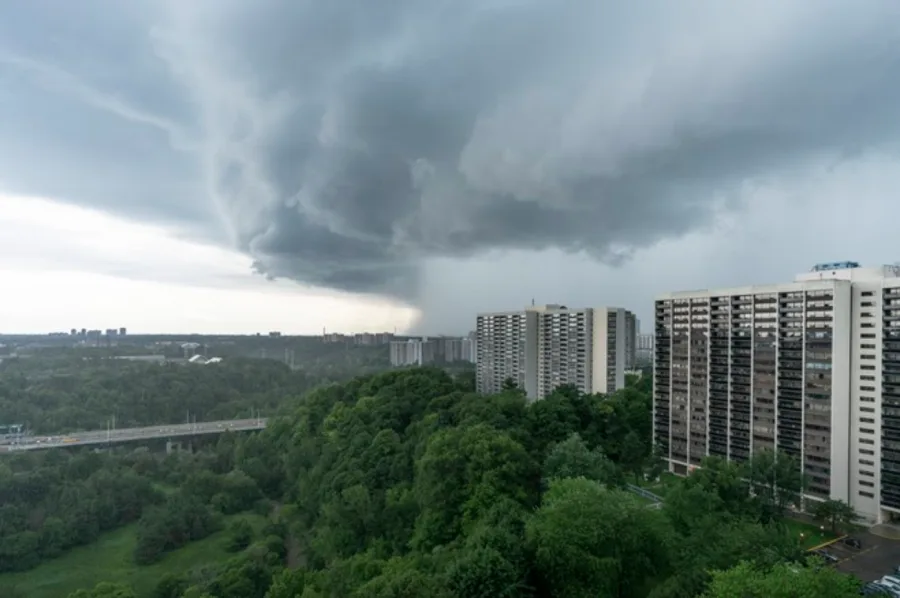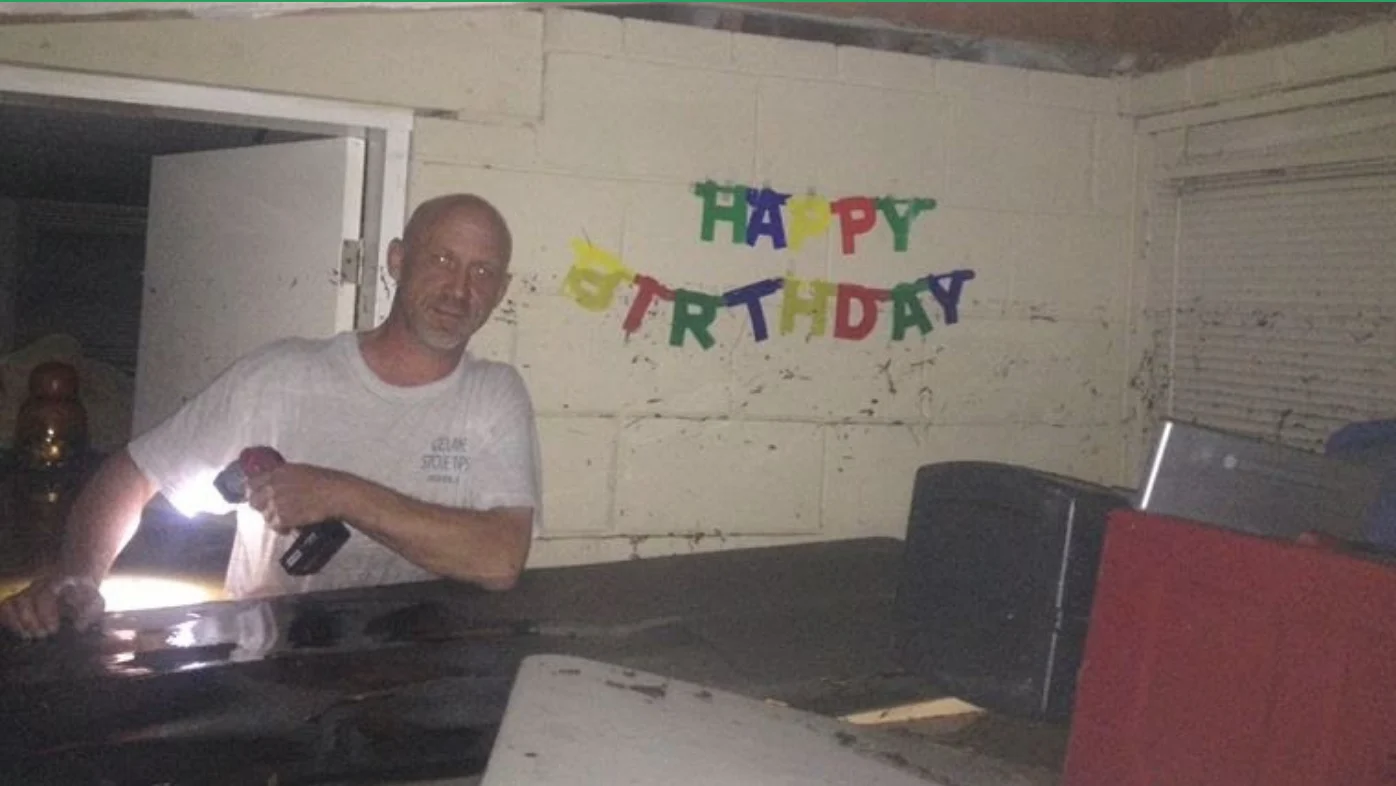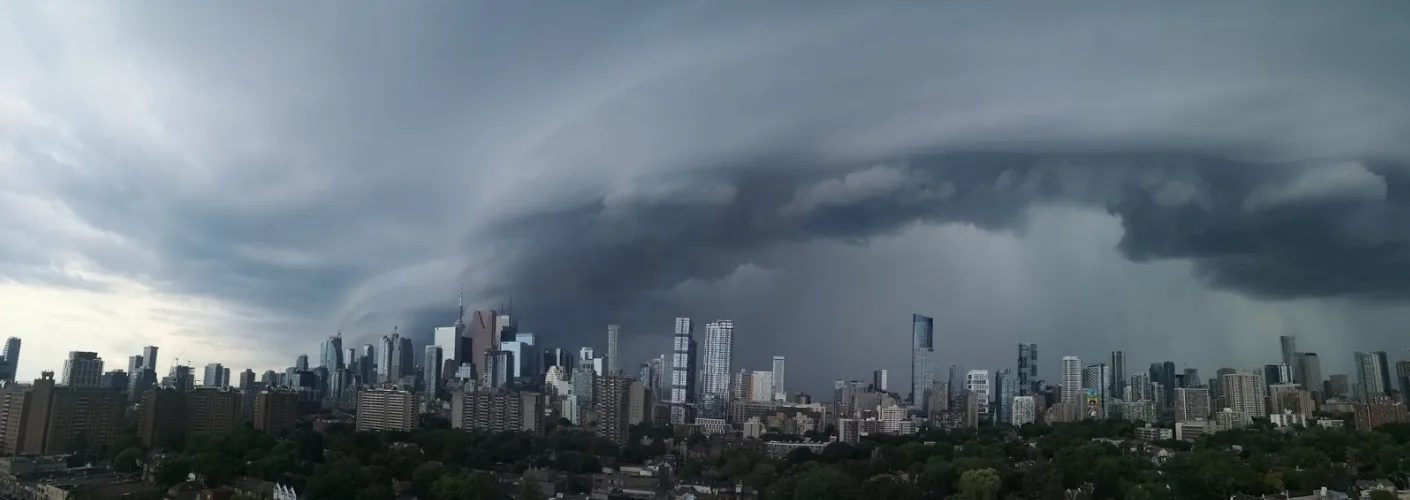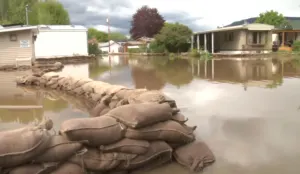
When it rains it pours. Ontario's major flooding problem
When it comes to intense flooding, Ontario has made major headlines. The province is in need of better solutions for managing flood risks and building for the future.
When everything sets up just right on a hot summer’s day, storm clouds will dramatically build over top of Lake Huron, and before you know it, those same clouds will have rushed their way towards the CN Tower. They open up with intense force, unleashing dramatic pools of water over the city.

Photo: Blago Hristovski, Toronto, Ont. August 3, 2020.
The storms could train, meaning they form again and again in the same area — taking the same track, adding to that same pool of water in the city. Cars submerged. Subways stopped. Basements flooded.
This is a scene that Toronto, Mississauga, Niagara, Brampton, Windsor etc. have all seen before. Communities within Ontario are susceptible to flooding and it seems as the storms grow larger and become more intense, the flooding becomes more devastating.
I remember when I first started reporting for The Weather Network, I covered the floods of July 2013. I visited a homeowner, Jeff Hill of Mississauga, who estimated that 76 inches (1930.4 mm) of water piled up in his basement after a period of relentless thunderstorms. July 8th was the day the flood hit, coincidently his birthday.

Photo: Jeff Hill, Mississauga, Ont. July 8, 2013.
He showed me the waterline on his wall, hard to even picture the water level being that high. And a year later, when I followed up with his restoration progress, the bathrooms and basement were still under construction.
But there are many residents of the southern Ontario region with a story like Jeff’s — the day the rain would not stop. Basement flooding has become the most common insurance claim in Canada and has dramatically risen over the last 10 years.
The fear of flooding is far-reaching and collaborative movements like Unflood Ontario are trying to heighten the awareness in the province. Ontarians need solutions and a better understanding of how to reduce flood impacts.
I had a chance to discuss flooding with Dr. Blair Feltmate, Head of Intact Centre of Climate Adaption at the University of Waterloo. He outlined three reasons as to why Ontario regularly makes headlines for intense flooding:
The amount: The intensity of the top one per cent of rainfall events that occurs today, as compared to about 60 years, has increased by 37 per cent towards the western end of the Great Lakes, and up to 71 per cent towards the east
The development: About 72 per cent of natural infrastructure – in the form of fields, forests and wetlands – that was originally present in southern Ontario, has been removed from the landscape in the past 100 years, and has either been “paved over” or turned into agricultural development.
The age: Aging municipal and housing infrastructure exacerbates flood risk
Essentially, southern Ontario is too “built up” and paved over for the intense amount of rainfall the region now sees in a changing climate.
It is no secret that the natural land Ontario has needs to be preserved. Once the flood plains are better outlined and the updated risks are determined, Feltmate suggested that “Ontario should halt building new communities and industrial complexes in these areas.”
Nature is a sponge helping to soak up rainfall and snowmelt. When Hurricane Hazel hit Ontario in 1954, destroying homes in the Weston and Mount Denis neighbourhoods of Toronto, among others, one of the outcomes was the creation of Marie Curtis Park, located at the mouth of the Etobicoke Creek. The park is made up of mainly deciduous trees, which are known for soaking up lots of water and intercepting rainfall with their dense canopy. Natural meadows, marshes, and sand dunes are also found inside Marie Curtis Park which all help mitigate urban flooding. Canadians knew 50 years ago that these natural areas would help fight against future floods. Today, experts are focusing on the importance of these natural landscapes, as future forecasts suggest we will need them more than ever in the years to come.

Photo: Monica. Marie Curtis Park, Toronto, Ont.
Any homeowner can take part in “unflooding” Ontario. Feltmate provided many inexpensive ideas for the average homeowner, such as placing plastic covers over window wells, adding an extension on your downspout to ensure water is flowing two meters away from home and checking on sump pumps before a storm strikes.
“By putting these simple measures in place, on a scale of one-to-100 for flood risk, the average homeowner could move their home from 80 down to 20 almost instantly, for almost zero money and effort,” he explained.
The experts at Unflood Ontario added to the list of solutions reminding Canadians that any action, big or small, can help reduce flood impacts in your community. Bryan Rose, Executive Director of the Niagara Community Foundation broke it down into seven steps:
Take a Home Flood Protection check-up to assess your flooding risks
Install a rain barrel on your property
Build a rain garden on your own property or within your community to hold and absorb rain water and beautify the neighbourhood.
Use permeable surfaces when installing new or repaving old driveways and walkways.
Install green-roof solutions in dense urban communities.
Plant a tree! Trees are among the most versatile and important pieces of natural infrastructure. Urban forests, tree canopies and street trees absorb stormwater runoff, reduce the urban heat island effect, and improve city air quality.
Contact your elected official and urge them to invest in natural infrastructure in your community.

Photo: Erin Wenckstern, Toronto, Ont. August 3, 2020.
I wish I could say that the flood of July 2013 was the only one I’ve covered in southern Ontario, but in reality, that is far from the truth. Every summer it seems like the GTA sees this issue. In August 2018, Toronto was hit yet again with storms that stirred up almost $80 million in insured damages. The rainfall in some regions peaked at 51 mm in just one hour.
Canadians need to accept that intense flooding is possible each summer. Understanding the importance of natural land is essential in the fight against flooding, especially in a region like Ontario.










